The National Art Gallery, A Shining Gem On Rwesero Hill
1 CommentNot many people probably know that The National Art Gallery (The NAG) in Nyanza is since 2006 a contemporary arts museum in Rwanda. It is even the only one in the great lakes district. The classical building hosting this museum has been constructed at the end of the fifties of the past century and is beautifully located in the scenic hills, just outside Nyanza. It was built for Rwanda’s last king Matara III Rudahigwa, who died in 1959, just before he would move into his modern palace.. Since Mutara’s death, the palace has hosted several judicial institutes, like the High Court and the Supreme Court. The late archeologist and visionair prof. dr. Celestin Kanimba, former DG of INMR, regarded contemporary art as one of the healing means to recover from the1994 genocide. The NAG is part of the Institute of National Museums of Rwanda, which includes 5 various national museums.
Architecture and location
The building, designed by Belgian architect Robert Quintet, has been constructed at the end of the 1950’s. It is beautifully located on top of Rwesero hill. The building and location itself can be experienced as an excellent typical Rwandese attraction, as a masterly mixture of landscape, colonial architecture and royal history.
It turned out to be a lucky shot to change the destiny of the palace into a museum.
In the first place because of the architecture and its surroundings. But even more important is its location in the city of Nyanza, were in former ‘royal’ days Rwandan culture was flourishing. The King’s Palace Museum is near and both museums are located far away from noisy cities like Kigali and Huye.
The National Art Collection
The first acquisitions of contemporary art date from before the founding of The NAG. They included donations, and some impressive purchases from local artists and furthermore acquisitions via workshops and festivals, with interesting works of art from various African countries.
However, since the founding of The NAG up until 2009 its main artistic policy was organizing yearly contests among local artists. These contests took place within the framework of the aftermath of 1994 genocide. Each contest had a specific theme, linked to Rwanda’s recent history. In other words the museum was a mirror of society in which terms like healing, reconciliation, tolerance and peace are key words. The first contest (2006) was about Peace and Tolerance, the second about Not to forget, Not remember (2007). Successive themes were Education for Culture of Excellence (2008) and Wisdom does not depend upon age (2009). The ‘’winning works’’ were acquired and thus included in a yearly growing collection. In 2009 these contest stopped and until 2012 the same collection exhibition was permanently on display in the museum.
Tendencies in East African contemporary art
Like elsewhere tradition and academism last forever in East Africa. However, some artists want to bring their academic skills to perfection, while others experiment in a challenging way with forms, materials and medium within tradition. They may have economic reasons to do so, because potential art buyers (local middle class, tourists and expats) are very keen on recognizable, typical African topics.
But on the other hand many artists in East Africa don’t worry about these aspects and demonstrate a piercing social engagement in their work. They testify of post colonialism, conflict, pain, globalism, gender, aids/hiv, urbanization and deforestation. They can’t see their art as value-free and devote their work to social change and awareness raising. Many of them don’t renounce their own tradition, but include artistic progress in their work of arts. Due to an increasing liberal cultural climate artists also trigger each other to embrace avant-garde.
One should keep in mind, that due to education, emancipation and democracy in East Africa new systems of appreciation and values have been developed. Many (potential) art lovers are not satisfied anymore to ‘’get what they see’’, on the contrary: they’re after unpredictable art, they want to reflect about it and want their imagination to be triggered.
And what about Rwanda?
It cannot be denied that Independency (1962) and genocide (1994) have affected Rwandese society a lot. As a matter of fact, only a few Rwandese artists from abroad brought a new visual language back home. In Rwandese art’s recurring topics like cows, doves, dancers, market scenes and drummers testify how strong tradition is embedded in the culture.
Although The NAG’s contests and topics triggered some artists to cross artistic borders, only a few pieces of art show intriguing conceptual impact or critical political meaning.
There are various reasons for this. First of all, all Rwandese, including the artists, are more embedded in their traditions than other East Africans. This ‘cultural conservatism’ is at odds with some tendencies in East African art. Rwanda lacks an academy of visual arts, and as a result most artists are self-taught. Every new generation is taught by elder artists, which causes a standstill in the artistic developments. Furthermore Rwanda still lacks a broad middle class, a solid group of (critical) art buyers. Last but not least, the country knows a limited freedom of expression, which certainly affects some artists.
One of the few really conceptual artists in Rwanda, was Jean Claude Sekijege [1977-2007], who returned from Nairobi to Rwanda after 1994 and unfortunately died young. The National Art Collection includes two of his works. In Cycle of Life (2006) Sekijege depicts an ostrich, which by nature can run and fly, with tied up feet and so demonstrates how human’s destiny can be influenced by the circumstances she/he’s living in.
Back to the NAG & The collection and exhibitions
Besides the mainstream of many traditional depictions of post-genocide Rwanda, The National Art Collection also includes some impressive avant garde. Besides Sekijege there are works of art by the Togolese artist Kosi Asou, Rwandese Yves Manzi and Kofi Kangolongo from DRC. All together the current collection of about 130 items constitutes a really good and representative base for extension and an exhibition program, which reflects on African society.
From the very start the unique building in its unrivalled setting, has attracted many local and foreign visitors. To pond their hearts even more while visiting the museum, in 2012 The NAG started curating its first international art exhibition. The main target was to demonstrate art could unveil the complex ties of African history from different angles and from different (African) countries. This first international exhibition ever in Rwanda showed how art could contribute to understand, to reconcile, to reflect and to remember current and recent African history. Furthermore with its broader, international and advanced exhibitions and activities, The NAG is able to attract the interest of many more local and foreign audiences. Launching cultural tourism certainly holds for The NAG.
This first exhibition included renown photographers Andrea Stultiens (NL) and Pieter Hugo (SA). With the many aspects of The Kaddu Wasswa Archive from Uganda, Stultiens realized a kind of huge interactive installation, in which the visitors – by reading and zapping through the archives and watching video – could discover Ugandan history from the angles of politics, HIV/Aids, lodging, recreation, environment et cetera.
The other project on display was the Rwanda 2004, Vestiges of a Genocide by South African Pieter Hugo, who introduced a whole (never elsewhere entirely exhibited) series of sites where 1994 genocide had taken place. Both artists donated these works to the INMR, which gave an enormous boost to the National Art Collection. Those acquisitions also meant the first photo works in the collection, not just of anybody, very special ones.
This exhibition led to an increased number of visitors of almost 40%, who were impressed by the high artistically qualified works on display. The art critic of the East African, the only independent weekly in East Africa, wrote enthusiastic about the event.
This success paved the way to a second International exhibition, which is currently on display in The NAG (until September 1st , 2013). Like the first exhibition it was launched in May on International Museum Day. This year the ICOM-organizers gave this day the theme Museums (memory + creativity) = social change.
Again there are two different exhibitions in The NAG, presenting 6 African artists.
Due to the support of the Dutch Prince Claus Fund The NAG is able to show impressive Photography from East-, West and South Africa, including works of Sammy Baloji (DRC), Uche James Iroha (Nigeria) and Santu Mofokeng (South Africa). From quite different points of departure, all of them are dedicated to their own African landscape.
In his project Memoire Sammy Baloji (1978) mercilessly lays bare the destructive influence of colonial regimes. He places black & white archive images of exploited Congolese workers in his hometown Lumumbashi ravaged landscape, where colonial rulers once shamelessly chased their desire for profit. Santu Mofokeng (1958) is considered one of the most important South African photographers of his generation. In his project Let’s Talk the visitor experiences landscapes in-need, by pollution whether exhaustion. Uche James Iroha (1972) unveils in Fire, Flesh and Blood a ‘bloody’ abattoir in South Nigeria, were thousands of people at the same time are working daily. In this series the visitor sees a combination of close up photography with fat clots of blood and more classical documentary photography.
The other exhibition Kingship & Kinship was preceded by a 1-week sculpture workshop for East African artists and art students. The topic of this workshop was depicting the last three kings of Rwanda in sketch designs. The workshop and the exhibition brought together three heterogeneous East African artists, from different countries, disciplines and philosophies. All three concentrate on depicting human figures.
Ugandan sculptor Lilian Mary Nabulime creates bold, beautiful and challenging works, which explore the politics of gender, race and disease in modern Africa. Nabulime developed a visual language that generated new ways of seeing and thinking about the HIV-virus in the East African community. Kenyan Peterson Kamwathi, originally a printmaker, created the last decade an impressive body of charcoal drawings and mixed media works of art, in which he exposes himself as a most socially engaged artist. The heads and masks of Rwandese Medard Bizimana demonstrate an evolution from early traditional wooden sculptures to his recent creations, in which he experiments with new materials like sawdust, metal, volcanic and crystal stones. In his portraits the artist explores different kinds of states of mind, but unlike his colleagues all his sculptures are purely aesthetic.
What’s next?
As Rwanda is opening up itself to the world, it is good that INMR hosts different African artists, who share other points of view, show other concerns and, last but not least, the use other media with NAG’s visitors. So far Rwanda has no artist-photographers yet.
Both international exhibitions presented a good first insight of the state of African art in the last decade. They explore and compare the various hot topics Africa is dealing with, like deforestation, genocide, post colonialism, pollution, industrialization, Aids/HIV and pain. The artists testify not only of their visionary skills, but also of their concern. Just what one would expect artists to do.
—
Lia Gieling – Curator The NAG (2013)
See more: http://www.museum.gov.rw
Comments
One Response to “The National Art Gallery, A Shining Gem On Rwesero Hill”
Leave a Reply
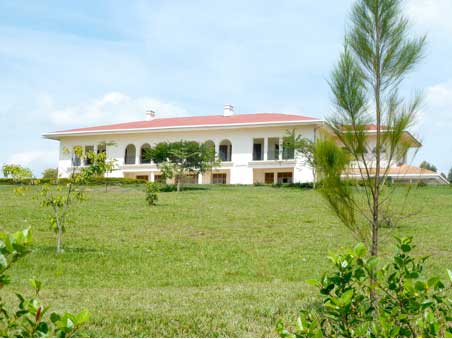
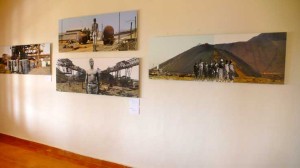
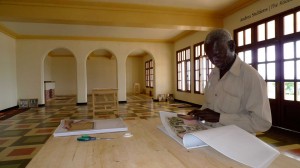
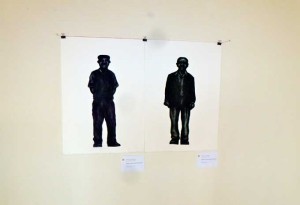


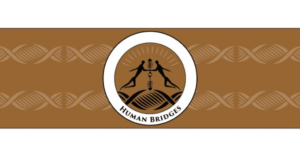

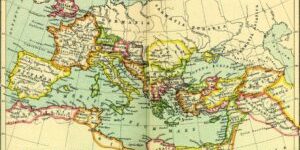


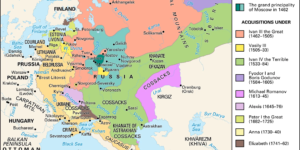
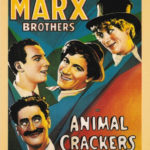
August 1st, 2016 @ 1:59 pm
we thank you for the contribution based cultural conservation and preservation,if possible the museums can be expanded its branches in whole country’s regions .so as to develop cultural tourism not only in southern province.thank you